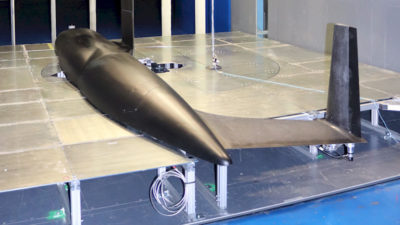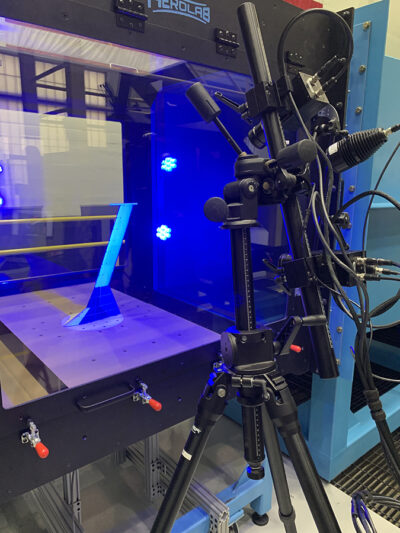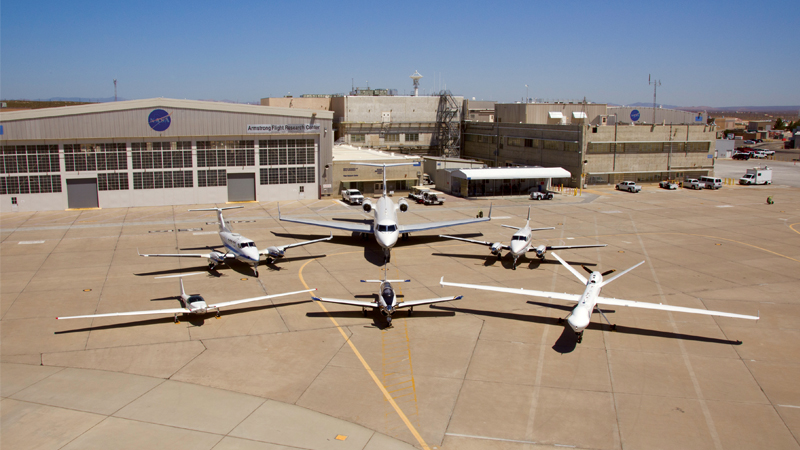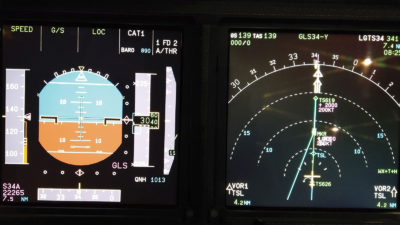Space vehicle, automation testing prevalent
By Karl Garman and Andy Freeborn|December 2019
The Flight Testing Technical Committee focuses on testing of aircraft, spacecraft, missiles or other vehicles in their natural environments.
The Stratolaunch aircraft was flown for the first time in April in Mojave, California. It set a record for the largest aircraft measured by wingspan, surpassing the 1947 Hughes H-4 Hercules, or the “Spruce Goose.” Paul Allen, who died in October 2018, founded Stratolaunch Systems to carry rockets for air-launch-to-orbit operations.
Multiple commercial space companies continued testing reusable suborbital vehicles. In May, Blue Origin’s New Shepard launched for the 11th time from a private site in Texas. This flight, the fifth for this particular reusable booster, reached an altitude of 65 miles. In February, Virgin Galactic’s SpaceShipTwo completed its second test flight above 50 miles altitude, one of several definitions for the boundary of space. This flight also included the first nonpilot crew member, continuing the company’s effort to develop commercial space tourism capabilities. In July, Virgin Orbit tested its Boeing 747-based satellite launcher, with the goal of making air launch satellite operations routine. These emerging operations, driven by wealthy individuals from mostly nonaerospace backgrounds, demonstrate the prominent role of nontraditional businesspeople in commercial space.
In July, NASA demonstrated the Orion spacecraft abort system during the Ascent Abort-2 test flight at Cape Canaveral Air Force Station in Florida. The test evaluated the Orion capsule’s ability to escape from its launch vehicle during conditions of maximum dynamic pressure. Orion is part of NASA’s architecture for future space exploration, which includes the Artemis program’s return to the moon.
Integrating various levels of autonomy was a consistent theme in atmospheric flight testing. Lockheed Martin’s Sikorsky division test flew its full-authority fly-by-wire UH-60A Black Hawk. This marked the first stage of Sikorsky’s optionally piloted vehicle, with future tests leading toward fully autonomous flight without a pilot on board. Further, a U.S. Air Force and Johns Hopkins University team operated the Testing of Autonomy in Complex Environments system to enable artificial intelligence to control various aircraft.
Research efforts to incorporate unmanned aircraft systems safely into the National Airspace System continued. In August, a University of Alaska team tested UAS beyond visual line-of-sight without supplemental collision avoidance observers. Also that month, the University of Kansas conducted flight tests to enhance the collision avoidance capabilities of UAS while minimizing trajectory perturbations. These projects seek to extend the capabilities of aircraft with varying levels of autonomy, including UAS and urban air mobility flights, or UAMs, over densely populated areas.
Details of various UAM test programs emerged throughout the year. For example, Aurora Flight Sciences first flew its autonomous passenger air vehicle prototype in January, but it crashed in June on its fifth flight. In May, Germany-based Lilium conducted the first untethered flight of its electric-powered five-seat Lilium Jet, which the company intends to produce for on-demand air taxi services. UAM projects such as these tend to demand confidentiality, with few details emerging from test programs.
Boeing conducted flight tests on the 737 MAX aircraft throughout most of the year, evaluating software fixes for the aircraft’s control system. The testing centered on software and hardware related to MCAS, short for Maneuvering Characteristics Augmentation System, designed to ensure linear control forces at high angles of attack. The testing program is part of requirements to return the aircraft to commercial service following fatal crashes in Indonesia and Ethiopia.
Boeing and Sikorsky, after a first flight in March, continued to expand the envelope of their SB-1 Defiant compound helicopter. The design is supposed to substantially increase cruising speed above that of current helicopters. In May, Sikorsky conducted the first flight of its HH-60W Combat Rescue Helicopter, intended to replace the Air Force’s HH-60G Pave Hawk. These widely varied programs represent the broad nature of the flight testing field, including new concepts and iterations of established aircraft.
Contributors: Brent Cobleigh, Libin Daniel, Ken Davidian, Shawn Keshmiri, Bruce Owens, James Sergeant, Derek Spear and Terry Weber



































